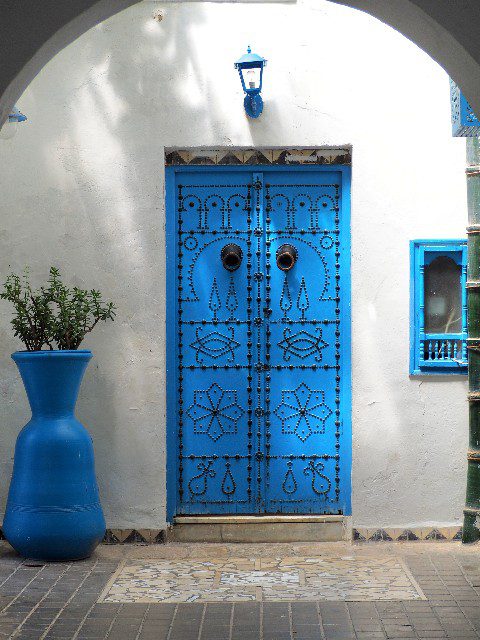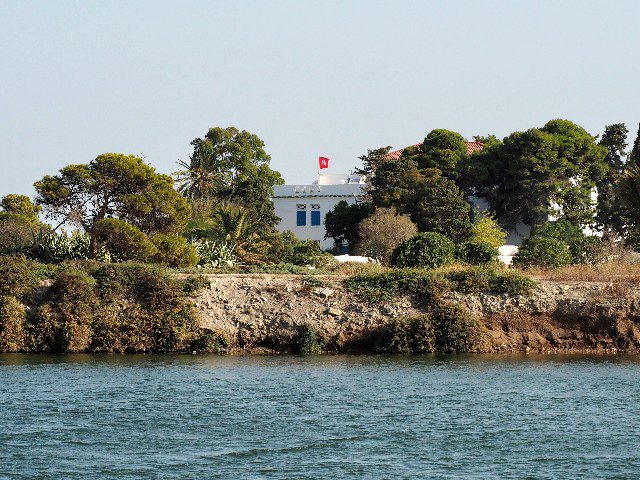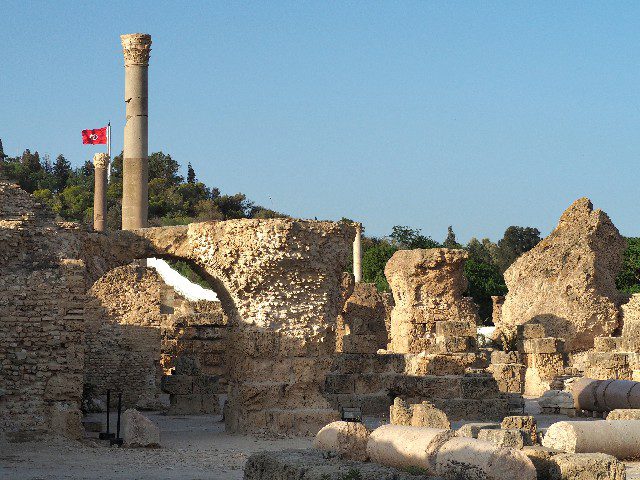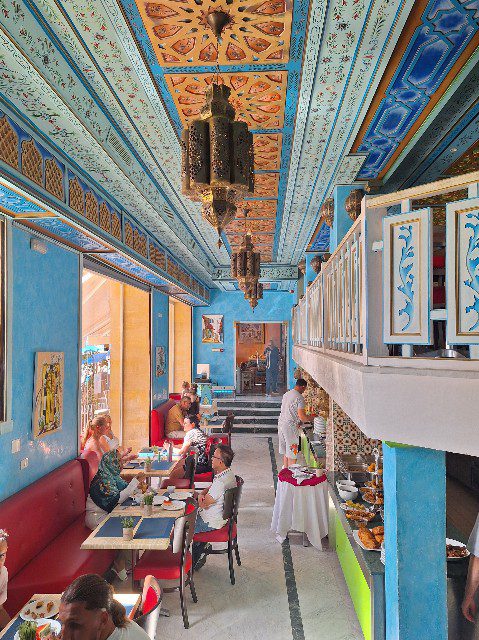
Yellow cactus fruits growing on cactus leaves
Tunisia, often called the jewel of North Africa. This country facing the Mediterranean Sea is filled with numerous attractions, from ancient Carthage ruins to the magnificent Sahara Desert. However, what captivated me most during my visit was, surprisingly, a single fruit. Yes, the cactus fruit.
This fruit, which survives the harsh desert environment and boasts vibrant colors and a refreshing taste, seemed to symbolize the wisdom of the Tunisian people and their coexistence with nature. Today, I’ll share the story of my encounter and adventure with cactus fruits in Tunisia, which began with this surprising discovery.
Cactus: Tunisia’s Most Popular Fruit

Piles of cactus fruits everywhere
Walking through Tunisian streets, you’ll see them everywhere. Oval fruits shining in bright yellow or deep red colors. At first, not knowing what they were, I approached out of curiosity and was surprised to discover they were cactus fruits.
When we think of cacti, we usually imagine prickly plants. However, the edible cacti in Tunisia look completely different. On their rounded leaves (actually modified stems), beautiful fruits grow like jewels.
The locals call this fruit “Handia” and cherish it as a relief during hot summer days. At markets, colorful Handia are piled high, delighting the eyes of visitors. The scene was like a flower garden blooming in the desert.
Experience in Tunis Medina (Old Town)
I visited Tunis’s old town, the Medina, on a midsummer day when the scorching sun seemed to burn through the streets. Walking through the maze-like narrow alleys, captivated by historic buildings and vibrant marketplaces, I happened to stop at a souk in the center of the Medina.
As I weaved my way between colorful spices, hand-woven carpets, and gleaming decorative items, a local merchant recommended I try a cactus fruit. Thanks to his suggestion, I had my first opportunity to taste a cactus fruit.

A town merchant selecting perfectly ripe cactus fruits
A Unique Flavor
The smooth, peeled cactus fruit. The moment I nervously brought it to my mouth, I was surprised by its unexpected flavor. What spread across my tongue was a juiciness like aloe, with a melon-like flavor carrying a subtle sweetness, and a strange aftertaste that felt somehow nostalgic.
It felt as if Tunisia’s history and culture were condensed in this small fruit. I could imagine people traveling through the desert under the scorching sun, quenching their thirst with this fruit. In that moment, I sensed the deep bond between the people of this country and nature.
Surprising Fact: Edible Cacti Growing Everywhere
After my encounter at the souk, I became captivated by cactus fruits during my stay in Tunisia. And surprisingly, once I became aware of their existence, I noticed that edible cacti were growing naturally everywhere. In the back alleys of towns, near ancient ruins, and on cliff edges facing the Mediterranean. Amongst Tunisia’s diverse landscapes, the cactus was always present. It seemed to symbolize this country’s strength and flexibility.

365 Steps, a hidden gem in Sidi Bou Said
Particularly memorable was my experience in Sidi Bou Said, famous for its beautiful white and blue townscape. From this hillside town, there’s a path called “365 Steps” leading down to the beach. On this path, I encountered a colony of wild cacti.
The scene was like a painting: the dazzling blue of the Mediterranean, the contrast of white buildings, and the bright yellow fruits atop vibrant green cacti. As I approached, instinctively raising my camera, I was about to learn an important lesson.

Sidi Bou Said is full of cacti. You’ll be tempted to pick them up.
Warning: Think Before You Touch
Captivated by the beautiful scenery of Sidi Bou Said, the moment I carelessly reached out to touch a cactus, a sharp pain shot through my fingertips.
The seemingly harmless cactus fruits and leaves actually have countless tiny spines invisible to the eye, in addition to the large visible ones. Just by touching them, these spines embed themselves in your skin, causing a persistent prickling discomfort that lasts for hours.
The price of forgetting respect for nature while being captivated by beauty was not small. Tunisia’s nature is beautiful but sometimes harsh. This experience taught me firsthand the importance of caution in foreign lands.
How to Handle Problems
After returning home, I researched how to deal with cactus spines that have become embedded in the skin. Fortunately, cactus spines are not poisonous, so they don’t lead to life-threatening serious conditions. However, since there’s a possibility of infection entering through the wound, it’s recommended to consult a medical institution as soon as possible.
Interestingly, as skin cells naturally renew themselves, spines sometimes come out naturally. In my case, the pain had almost completely disappeared after about a week. This experience became a valuable memory that taught me both the harshness of Tunisian nature and the wonder of the human body.
Conclusion: What the Desert Jewel Taught Me
My encounter with cactus fruits in Tunisia provided a deep cultural insight beyond just a culinary experience. With their vibrant colors and refreshing taste, these fruits symbolize the wisdom of Tunisian people and nature’s remarkable ability to adapt to harsh environments. At the same time, their hidden spines seemed to warn of dangers lurking within beauty.
When visiting foreign lands as travelers, we always need to approach with respect and caution. But simultaneously, by opening our hearts to experiences unique to that land, unexpected discoveries and learnings await us. The cactus fruit of Tunisia was exactly a microcosm of that country. The external beauty, the inner sweetness, and the necessary caution when touching. All these tell the story of Tunisia’s depth.
If you have the opportunity to visit Tunisia, please try the cactus fruit. In that one bite, you’ll find the desert wind, the Mediterranean sea breeze, and thousands of years of history.





